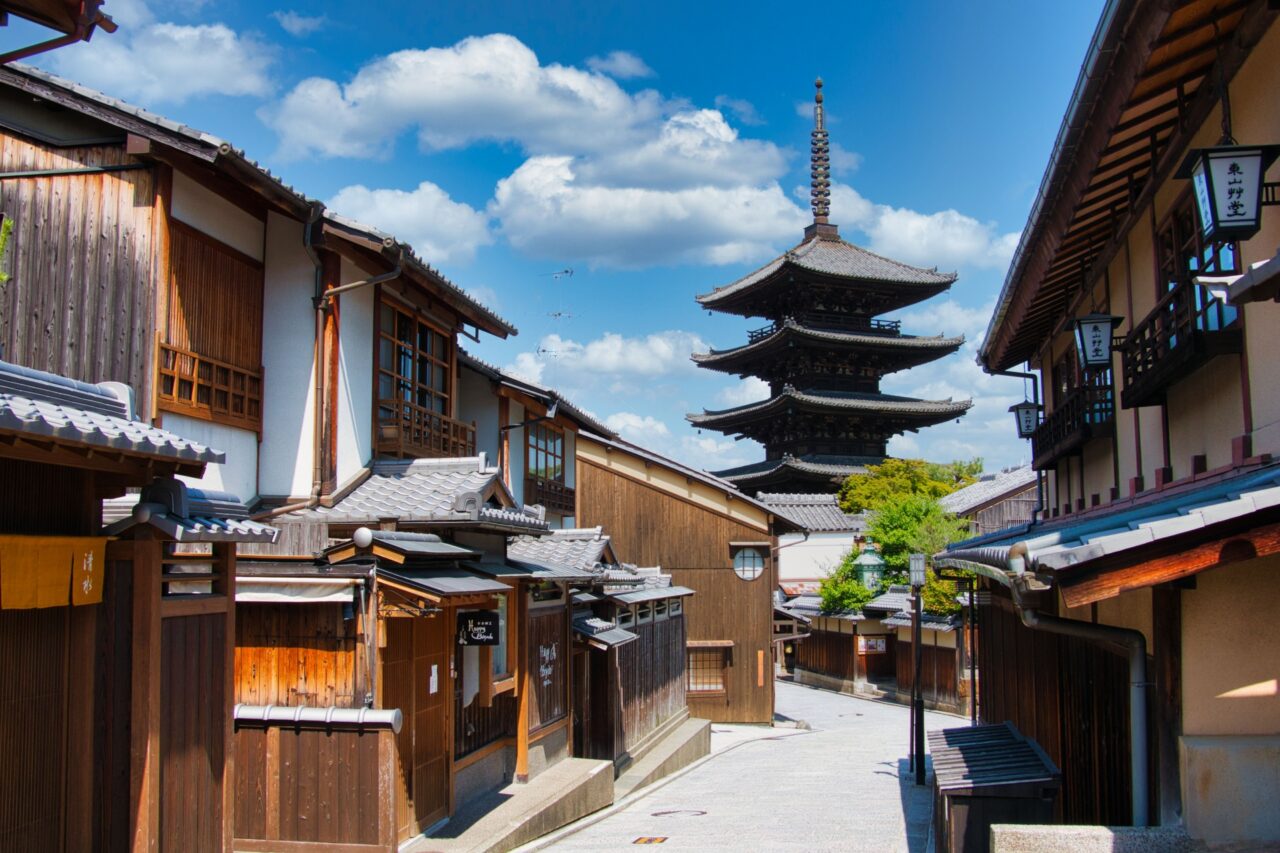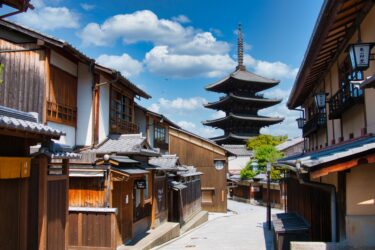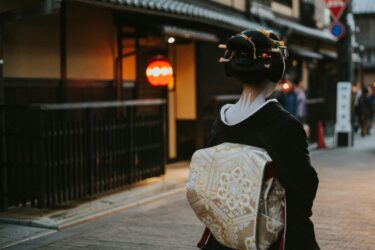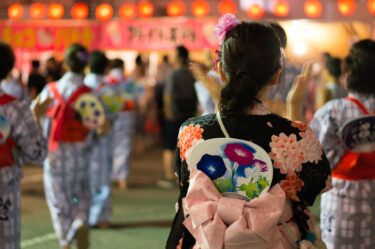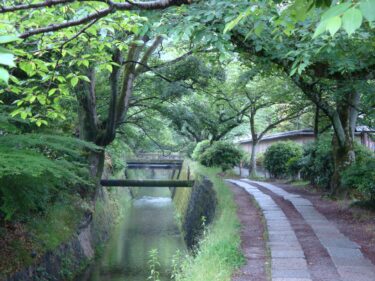Kyoto is a city of many faces. From ancient temples and traditional townhouses to busy shopping streets and quiet mountain villages, each district in the city offers something different. You may be in Kyoto for just a few days, or for a longer stay, but getting to know the character of each area can help you get the most out of your trip.
Use this guide to get a sense of some of Kyoto’s most iconic districts, including what to see and do in each one.
Gion and Higashiyama
The Heart of Traditional Kyoto
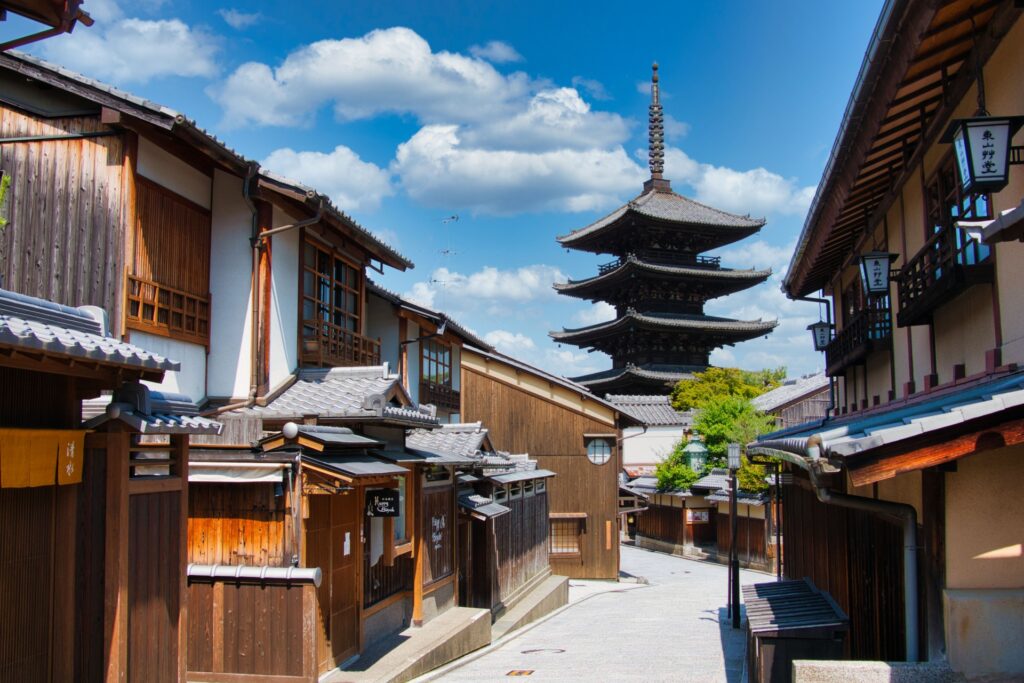

If you imagine Kyoto as narrow lanes, lantern-lit teahouses, and the possibility of glimpsing a geisha (or geiko, as they’re known in Kyoto), you’re thinking of Gion. This is one of the city’s most famous areas and a must-visit for anyone new to Kyoto.
In Gion, Hanamikoji Street is the most iconic spot. Walking along this historic road, you’ll find traditional wooden machiya buildings, many of which serve as private teahouses or upscale kaiseki restaurants. Nearby, the Higashiyama district offers a scenic route to Kiyomizu-dera Temple via the cobbled slopes of Sannenzaka and Ninenzaka. These streets can get pretty popular, though, so be prepared!
This area is also home to sights like Yasaka Shrine and Maruyama Park, which is especially busy during cherry blossom season.
What to do:
- Visit Kiyomizu-dera Temple.
- Watch for maiko (apprentice geisha) in the early evening.
- Try Kyoto-style sweets or enjoy a full-course kaiseki meal.
Arashiyama
Nature and Temples on the City’s Edge
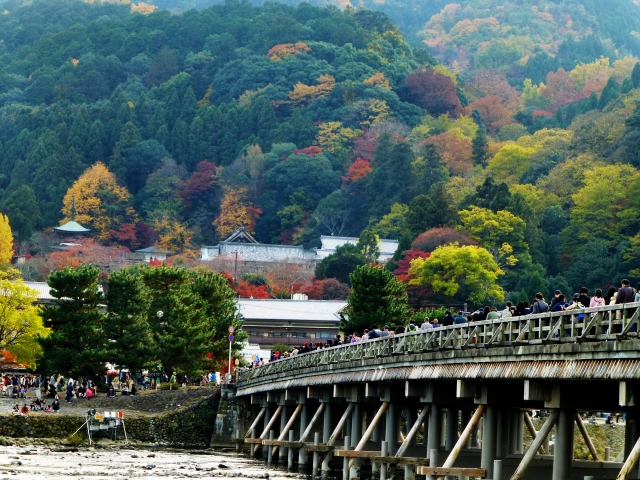
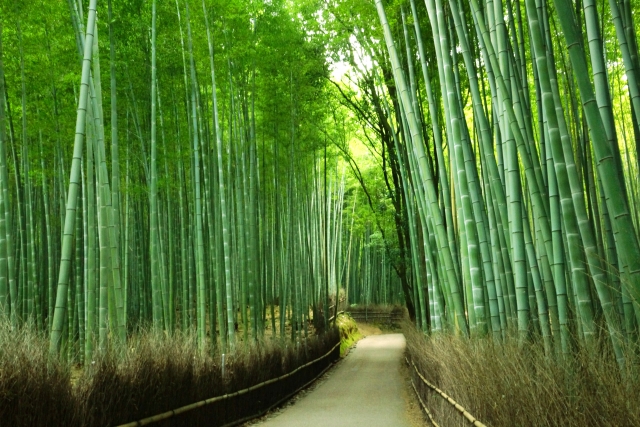
Located in western Kyoto, Arashiyama is a great place to visit if you want to get a little more nature with your sightseeing: when you arrive at either of Arashiyama’s main train stations, you’ll find yourself near the famous Togetsukyo Bridge, stretching across the Katsura River between forested hills. The area is especially beautiful in the spring and autumn, but worth a visit year-round.
Arashiyama is most famous for its Bamboo Grove, an atmospheric path through towering stalks of bamboo. Just be aware that the grove is extremely popular, and its coverage on social media has brought throngs of visitors to come see it, so if you make the trip yourself, you may want to aim for the early morning hours if you’re hoping to catch a more tranquil grove visit.
Nearby, Tenryu-ji Temple, a UNESCO World Heritage Site, features a beautiful Zen garden and views of the surrounding hills. You can also find some more peaceful walking trails across the Togetsukyo Bridge from the main train stations, or visit the Iwatayama Monkey Park for panoramic views of the city – and, of course, a meeting with the charming wild monkeys you’ll find there.
What to do:
- Walk through the Bamboo Grove early in the morning to avoid crowds
- Take a boat ride on the Hozugawa River
- Enjoy yudofu (boiled tofu), a specialty at local restaurants
Central Kyoto
Imperial Elegance and Historic Landmarks
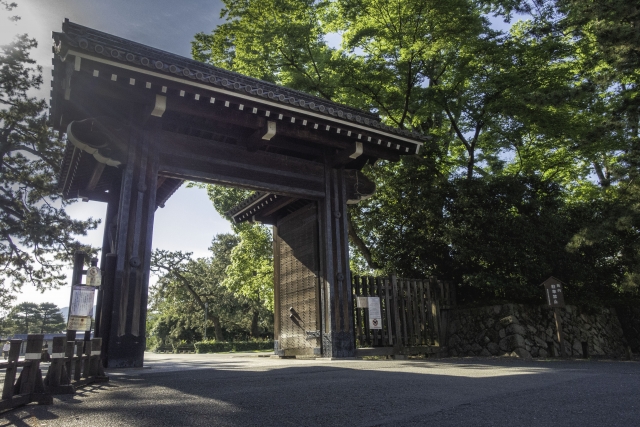
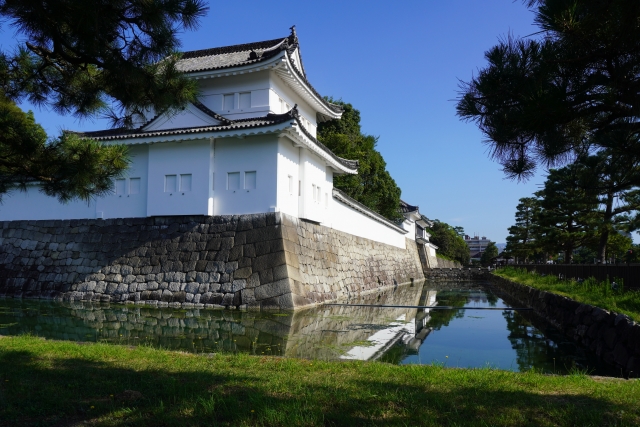
This area includes some of Kyoto’s most historically significant sites, like the Kyoto Imperial Palace and Nijo Castle. It’s also home to more modern conveniences and good public transportation links, making it a strategic base for sightseeing.
The Kyoto Gyoen National Garden surrounds the Imperial Palace and is a pleasant spot for walking. Nearby, Nijo Castle offers a glimpse into shogunate-era architecture and power. Although not as bustling as the downtown area, Central Kyoto is a good blend of culture and convenience.
What to do:
- Tour the Kyoto Imperial Palace grounds.
- Explore Nijo Castle and its famous “nightingale floors.”
- Visit the Nishijin area to see traditional textile weaving.
Karasuma and Kawaramachi
Kyoto’s Downtown
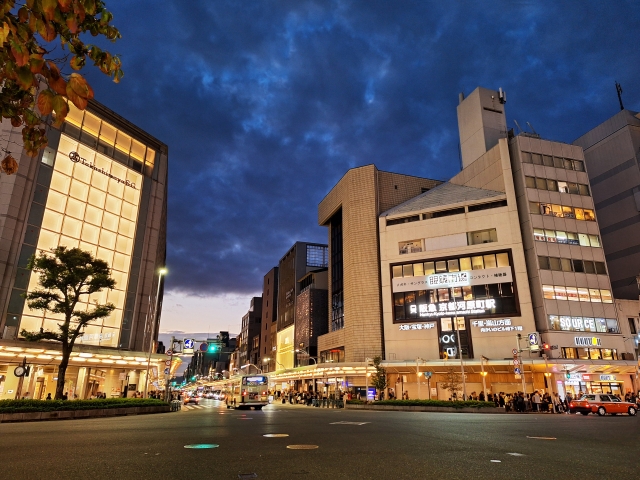
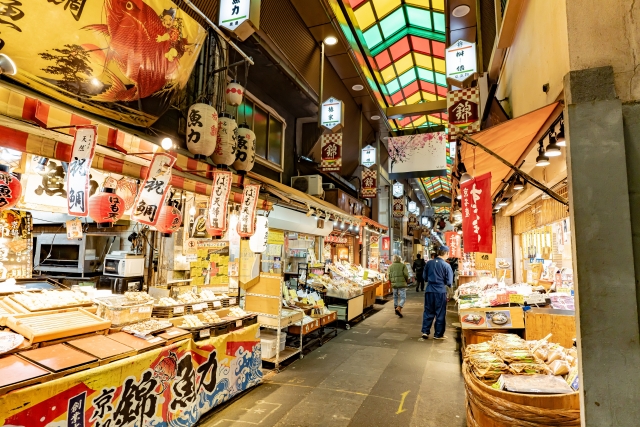
If you want shopping, dining, and nightlife, this is the place to go. Downtown Kyoto, centered around Karasuma and Kawaramachi streets, is the city’s commercial hub, west of the Kamo River between Sanjo and Shijo streets to the north and south. While the architecture here tends to be more modern, it still has plenty of Kyoto flavor, and it’s easy to find small shrines, traditional machiya townhouses (some of which are cafes you can visit!), and even some streets like Pontocho (pictured above) with that traditional “Kyoto” look.
Nishiki Market, a narrow shopping street lined with food stalls and specialty shops, was once primarily a shopping spot for locals, but it offers a variety of tasty bites – not to mention atmosphere – that have made it a popular destination for tourists, too. Nearby, you’ll find department stores, local boutiques, and everything from sushi to vegan cafes. The downtown area also includes two covered shopping arcades, Teramachi and Shimogyoku, which are lined with everything from tea shops to clothing stores and drug stores. The Kamogawa River runs just to the east, where Pontocho Alley and Kiyamachi Street run parallel, offering atmospheric dining and nightlife.
What to do:
- Eat your way through Nishiki Market.
- Shop along Teramachi and Shinkyogoku arcades.
- Enjoy dinner in Pontocho with a view of the Kamogawa River.
Northwest Kyoto
Zen Temples and Peaceful Gardens

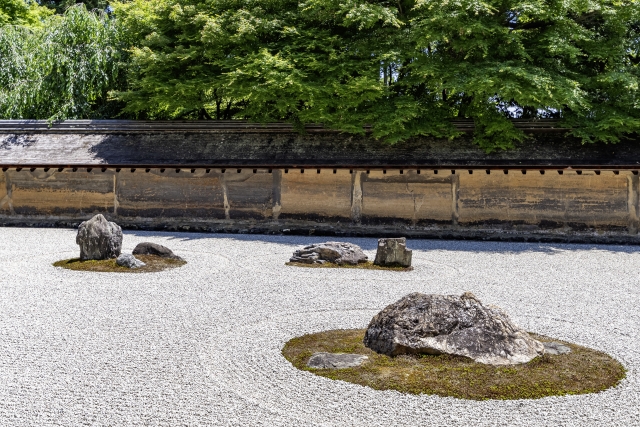
Northern Kyoto is where you’ll find some of the city’s most famous Zen temples and tranquil landscapes. It’s quieter than downtown or Gion, if you’re looking for a slower pace, but public transit options will also be less plentiful, so you may need to be strategic about when and where to catch your buses, or consider taxing a taxi if you don’t want to worry about the bus schedule.
Kinkaku-ji Temple (the Golden Pavilion) is probably the most famous site in this area and draws crowds year-round. Nearby Ryoan-ji Temple is known for its simple but striking rock garden. The Daitoku-ji Temple complex is less visited, but with multiple subtemples and beautiful dry landscapes, it’s also one of the largest zen temples in Kyoto.
What to do:
- Visit Kinkaku-ji early in the morning to avoid crowds.
- Meditate at a Zen temple like Daitoku-ji.
- Stop by Haradani-en Garden in spring for a floral escape.
Southern Kyoto
Fushimi Inari and Sake Culture
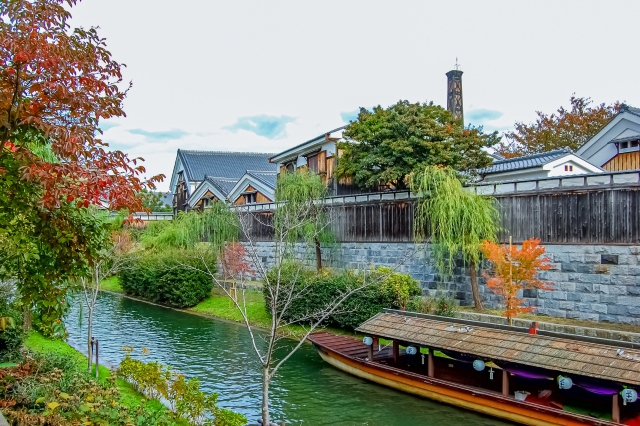
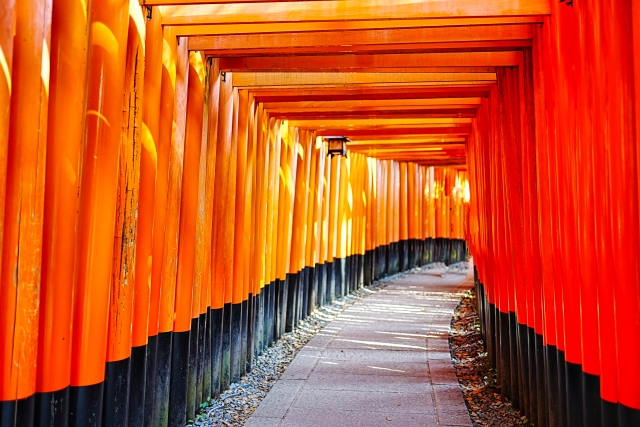
Most people come to southern Kyoto to see Fushimi Inari Taisha Shrine and its thousands of vermilion torii gates, and for good reason. It’s one of the most visited spots in the country, and the torii-lined path up Mount Inari can get a bit crowded, but fewer visitors walk all the way to the top, where you’ll find a more peaceful forest walk and views of Kyoto.
But there’s more to this area than this famous shrine. Just a short train ride away you’ll find the Fushimi district, a historic center of sake brewing. The area is dotted with traditional breweries, many of which have been operating for centuries. It’s a great place to learn about Kyoto’s long-standing connection to sake – and, of course, to try a few varieties for yourself.
What to do:
- Hike the full trail behind Fushimi Inari Shrine.
- Visit the Gekkeikan Okura Sake Museum.
- Try local sake with lunch at a neighborhood izakaya.
Kyoto Station Area
The Modern Gateway
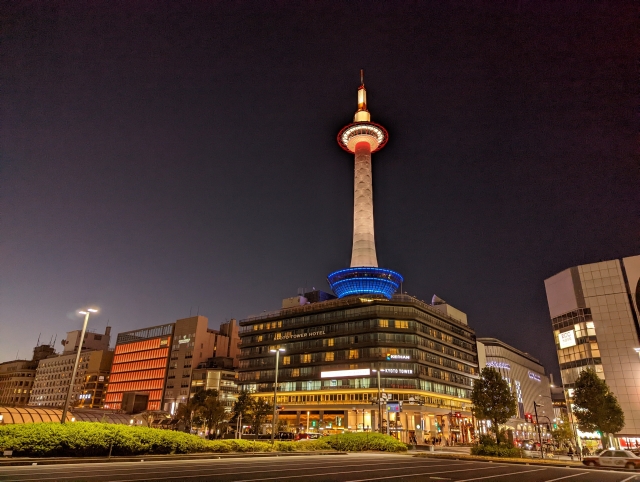
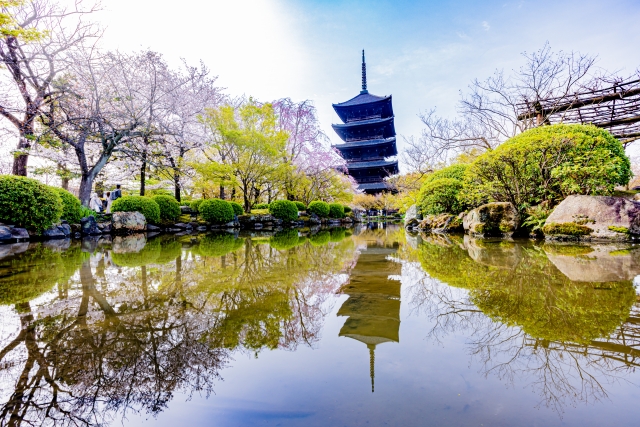
Kyoto Station is a transportation hub, but it’s also a kind of modern landmark in the city. The modern, soaring glass architecture of the station building is impossible to miss, which is lucky for visitors, as it’s also home to a rooftop garden, observation deck, and multiple shopping and dining floors. This will be your station if you’re going anywhere by shinkansen, and you may want to stay in the area if you’re planning to head to another part of Japan the next day.
Just across from the station is Kyoto Tower, where you can get a panoramic view of the city from the observation deck. A brief train ride south brings you to To-ji Temple, home to Kyoto’s tallest wooden pagoda and a popular flea market held on the 21st of each month.
What to do:
- Have a meal in the station’s restaurant floors or food halls.
- Pick up souvenirs in the Isetan department store.
- Visit To-ji Temple’s monthly flea market (held on the 21st).
Day Trips to the Kyoto Countryside and Beyond
Beyond the City Center
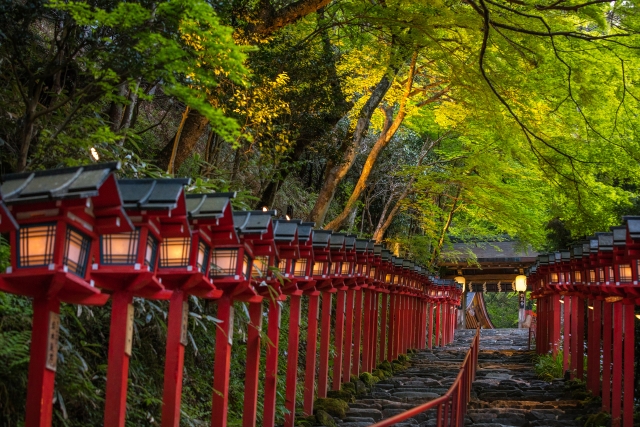

If you’re really looking for a unique experience outside of the city’s more popular central districts, be prepared to spend a little bit of time getting there, but don’t worry, the trip will be worth it.
Kyoto is surrounded by mountains, and some of those contain charming districts and villages, many of which are accessible via train or bus and make great half-day or full-day trips.
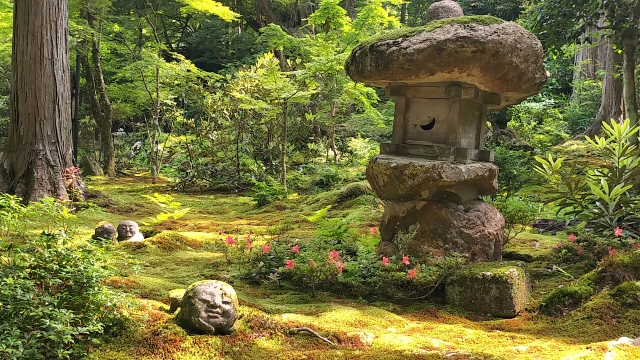
Ohara, about an hour’s bus ride to the northeast, is home to Sanzen-in Temple, with its mossy grounds and adorable statues hiding amongst them. In Kurama and Kibune, located in the northern mountains, you can visit Kibune Shrine in the forest, and take a beautiful hiking path up the mountainside to Kurama-dera Temple. Uji, to the south, is its own city, but well worth a visit for its famous matcha and the beautiful Byodo-in Temple.
What to do:
- Hike from Kurama to Kibune.
- Explore the quiet temples and gardens of Ohara
- Sip matcha in Uji and visit Byodo-in Temple in Uji
Like any popular city, Kyoto has its most famous attractions, and many visitors do prioritize these during their days in the city. If you’re able, though, you might find a much richer and more varied experience of Kyoto by visiting several of its neighborhoods, and perhaps even venturing outside the city center. Though it’s known for its history, Kyoto is a city of contrasts: the modern energy of downtown, and the quieter backstreets of traditional Higashiyama or Nishijin.
Wherever you stay, consider planning your days around the different districts. You’ll get a better sense of Kyoto’s unique blend of tradition and modernity, and probably find a few surprises along the way.

